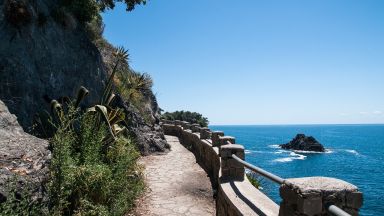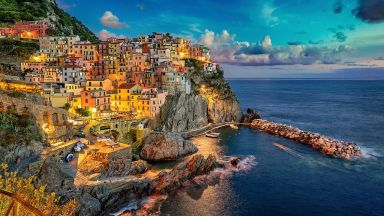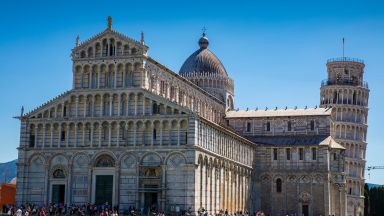Pisa: The Complete Guide
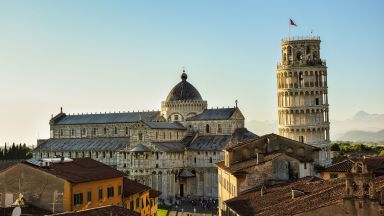
Situated in the Tuscany region of Italy, Pisa serves as the capital of the Province of Pisa and is traversed by the Arno river, which also flows through Florence before reaching the Ligurian Sea. Pisa, along with its enchanting Piazza dei Miracoli, designated as a UNESCO World Heritage site in 1987, is an essential destination for any traveler exploring Tuscany. Every year, millions of people from all over the globe visit this iconic place, marveling at the unique beauty of the leaning tower and attempting, through clever perspective, to preserve its upright stance.
The city, with a population exceeding 90,000, is renowned for its architectural landscape. Numerous magnificent bridges span the Arno river, providing stunning views. Historical figures like Shelley and Leopardi praised the sunset views from the Ponte di Mezzo bridge as the finest in the world. Pisa is adorned with a variety of structures, from Gothic churches and Renaissance squares to Medieval palaces.
With a history spanning over a thousand years, Pisa’s roots can be traced back to the Etruscan era, and its name originates from the nearby “mouth” of the Arno river. The city flourished during the era of the Maritime Republics, becoming a focal point for artistic brilliance, boasting remarkable Romanesque and Gothic churches that have transformed it into a veritable treasure trove of art.
Pisa offers a rich cultural experience, highlighted by its educational institutions and historical sites such as the Piazza del Duomo, or Square of Miracles, home to the iconic Leaning Tower, the Cathedral, and the Baptistery. This city, often compared to Florence, offers a unique blend of culture, education, and some of Italy’s most spectacular sights.
History of Pisa
Pisa, a city with a rich history dating back to ancient times, derives its name from the Etruscan word for ‘mouth’, referring to its location at the mouth of the Arno River. Historical excavations in the 1980s and 1990s unearthed significant archaeological remains, including a 5th-century BC tomb of an Etruscan prince, confirming Pisa’s origins as an Etruscan city and highlighting its historical role as a maritime trading hub with other Mediterranean civilizations. Ancient Roman authors, including Virgil, referred to Pisa as an old and significant center, further evidenced by its development into a strategic port during the Roman era, facilitating naval expeditions and trade across the Mediterranean.
During the late antiquity and early middle ages, Pisa’s advantageous geographical position by the river systems contributed to its resilience and growth despite the broader decline of the Roman Empire. The city played a vital role in supporting Pope Gregory I against the Byzantines and later aligned with the Lombards, eventually rising to prominence as the main port of the Upper Tyrrhenian Sea. After overcoming a brief crisis following Charlemagne’s conquests, Pisa expanded its maritime and military capabilities in the 9th century, initiating conflicts with the Saracens and establishing itself as a powerful naval presence in the Mediterranean.
By the 11th century, Pisa reached its zenith as a maritime republic, one of Italy’s historical ‘Repubbliche Marinare’, controlling a vast merchant fleet and navy. This period saw Pisa exerting its power through military and trading ventures, notably sacking Reggio Calabria and conquering Corsica, while also participating in the First Crusade. The city established numerous colonies across the Levant, gaining privileges and immunities that facilitated its traders and solidified its status in the region. However, rivalry with Genoa intensified, leading to prolonged conflicts that shaped much of its medieval history.
The apex of Pisa’s power continued into the 12th century, culminating in significant naval victories and territorial expansions. However, the city’s prominence began to wane following the devastating defeat at the Battle of Meloria in 1284 against Genoa, which drastically reduced its maritime influence and economic standing. The subsequent centuries saw Pisa struggling to maintain its former glory, facing sieges and occupations, until it was finally absorbed by Florence in the early 15th century. Despite its decline as a major maritime power, Pisa remained culturally significant, spurred by the presence of the University of Pisa and later by other higher education institutions, and continues to be renowned for its historical and educational contributions.
Visiting Pisa for the first time and wondering what are the top places to see in the city? In this complete guide, I share the best things to do in Pisa on the first visit. To help you plan your trip, I have also included an interactive map and practical tips for visiting!
This website uses affiliate links which earn a small commission at no additional cost to you.
24 Best places to See in Pisa
This complete guide to Pisa not only tells you about the very best sights and tourist attractions for first-time visitors to the city but also provide insights into a few of our personal favorite things to do.
This is a practical guide to visiting the best places to see in Pisa and is filled with tips and info that should answer all your questions!
Museo dell'Opera del Duomo (Cathedral Museum)
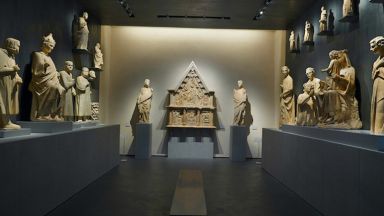
Location: Museo dell'Opera del Duomo, Piazza del Duomo, Pisa, Province of Pisa, Italy | Opera del Duomo Museum, Cathedral Ticket & Audio Guide | Distance: 0.00km
Visiting Museo dell'Opera del Duomo (Cathedral Museum)
Leaning Tower of Pisa
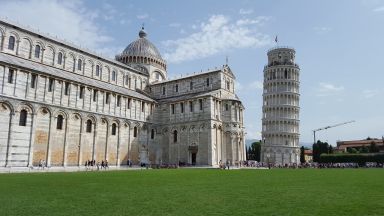
Location: Leaning Tower of Pisa, Piazza del Duomo, Pisa, Province of Pisa, Italy | Website | Distance: 0.00km
Visiting Leaning Tower of Pisa
Cathedral of Santa Maria Assunta
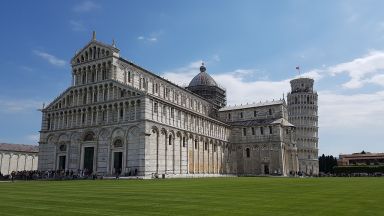
Location: Cathedral of Santa Maria Assunta, Piazza San Giovanni, Volterra, Pisa, Italy | Distance: 0.10km
Visiting Cathedral of Santa Maria Assunta
Campo dei Miracoli
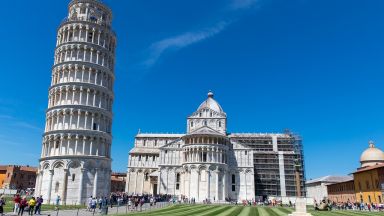
Visiting Campo dei Miracoli
Camposanto (Sacred Field)
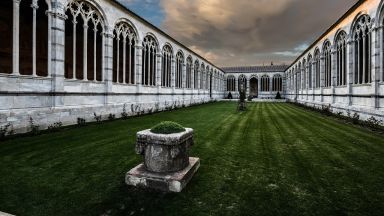
Location: Camposanto, Piazza del Duomo, Pisa Province of Pisa, Italy | Hours: January-February, from 10.00 am to 5.00 pm; March-April, from 9:00 am to 7.00 pm; May-June, from 9.00 am to 8.00 pm; July-October, from 9.00 am to 8.00 pm; November-December, from 9.00 am to 7.00 pm. | Price: Adults 7€ (including the Cathedral). | Website | Camposanto and Cathedral Entry Tickets and Audio Guide | Distance: 0.20km
Visiting Camposanto (Sacred Field)
Battistero di San Giovanni (Pisa Baptistery)
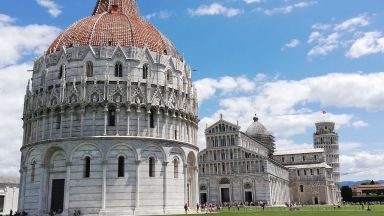
Location: Battistero di San Giovanni, Piazza del Duomo, Pisa, Province of Pisa, Italy | Baptistery and Cathedral Ticket with Audio Guide | Distance: 0.20km
Visiting Battistero di San Giovanni (Pisa Baptistery)
Orto Botanico (Botanic Garden)
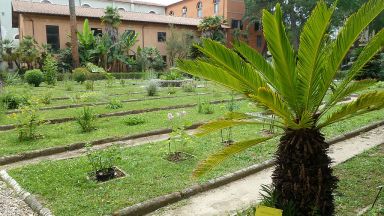
Location: Botanical Garden and Museum, Via Luca Ghini, Pisa, Province of Pisa, Italy | Hours: From October 31st to March 26th: every day, 8.30am – 5pm From 27 March to 29 April: every day, 8.30am – 7.00pm From 30 April to 12 June: every day, 8.30am – 8.00pm From 13 June to 12 July: every day, 8.30am – 9.00pm From 13 July to 4 September: every day, 8.30am – 8.00pm From 5 September to 10 October: every day, 8.30am – 7.00pm From 11 to 30 October: every day, 8.30am – 6.00pm | Price: Adults €4 | Website | Distance: 0.30km
Visiting Orto Botanico (Botanic Garden)
Bagni di Nerone (Roman Baths of Nero)
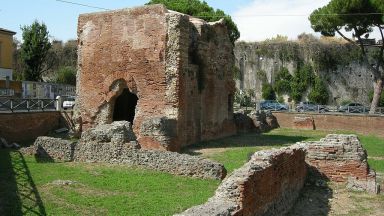
Location: Baths of Nero, Largo Parlascio, Pisa, Province of Pisa, Italy | Hours: 24 hours | Price: Free | Distance: 0.40km
Visiting Bagni di Nerone (Roman Baths of Nero)
Palazzo dei Cavalieri
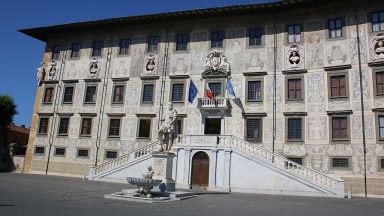
Location: Palazzo della Carovana, Piazza dei Cavalieri, Pisa Province of Pisa, Italy | Distance: 0.50km
Visiting Palazzo dei Cavalieri
Santo Stefano dei Cavalieri
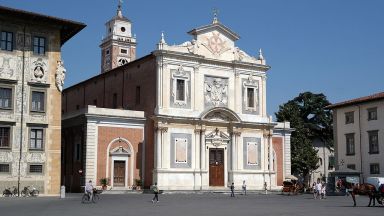
Location: Santo Stefano dei Cavalieri, Piazza dei Cavalieri, Pisa, Province of Pisa, Italy | Hours: Monday, Wednesday, Friday and Sunday, closed; Tuesday and Thursday, from 10.30 am to 12.30 pm; Saturday, from 4.30 pm to 7.30 pm. | Distance: 0.50km
Visiting Santo Stefano dei Cavalieri
Borgo Stretto
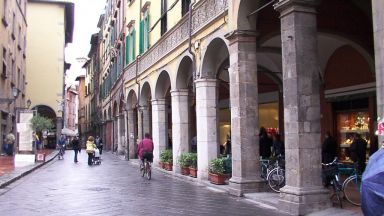
Location: Borgo Stretto, Pisa, Province of Pisa, Italy | Price: Free | Distance: 0.80km
Visiting Borgo Stretto
Santa Maria della Spina
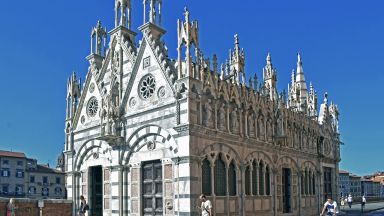
Location: Santa Maria della Spina, Lungarno Gambacorti, Pisa, Province of Pisa, Italy | Hours: Open only on special occasions or exhibitions | Price: Free | Distance: 0.90km
Visiting Santa Maria della Spina
Palazzo Blu
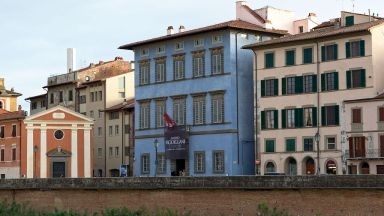
Location: Palazzo Giuli Rosselmini Gualandi, Lungarno Gambacorti, Pisa, Province of Pisa, Italy | Hours: Tuesday - Friday: 10:00 AM – 7:00 PM Saturday - Sunday and holidays: 10:00 AM – 8:00 PM | Price: Adult: 3,00 Euro | Website | Distance: 0.90km
Visiting Palazzo Blu
Logge di Banchi
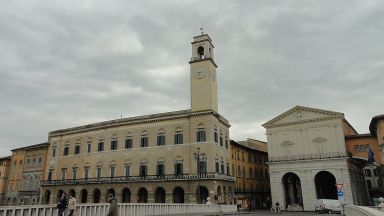
Location: Logge dei Banchi, Via di Banchi, Pisa, Province of Pisa, Italy | Distance: 0.90km
Visiting Logge di Banchi
Museum of the Ancient Ships, Pisa
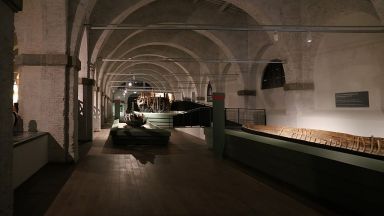
Location: Museum of Ancient Ships of Pisa, Lungarno Ranieri Simonelli, Pisa, Province of Pisa, Italy | Hours: Friday 3.30 – 6.30 pm Saturday and Sunday 10.30 am – 6.30 pm | Price: Adults € 10,00, reduced € 8.00 Family € 20,00 | Website | Distance: 1.00km
Visiting Museum of the Ancient Ships, Pisa
Torre Guelfa, Pisa
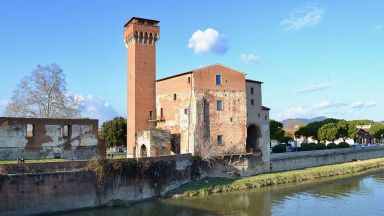
Location: Torre Guelfa, Pisa, Province of Pisa, Italy | Distance: 1.10km
Visiting Torre Guelfa, Pisa
Santo Sepolcro, Pisa
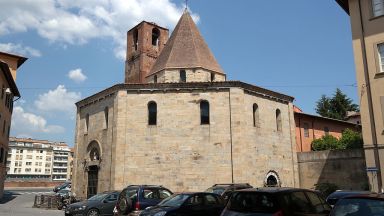
Location: Santo Sepolcro, Piazza Santo Sepolcro, Pisa, Province of Pisa, Italy | Hours: 3:30-5:00 pm | Price: Free | Distance: 1.10km
Visiting Santo Sepolcro, Pisa
Palazzo Vecchio de Palazzo Medici
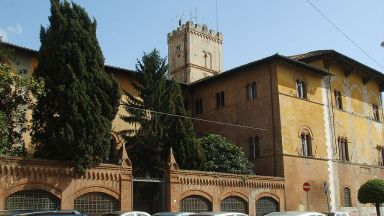
Location: Palazzo Medici, Piazza Giuseppe Mazzini, Pisa, Province of Pisa, Italy | Distance: 1.20km
Visiting Palazzo Vecchio de Palazzo Medici
Murale Tuttomondo by Keith Haring
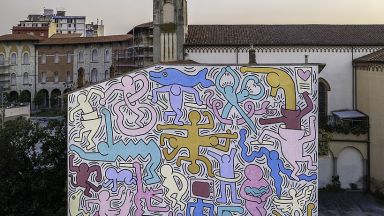
Location: P.za V. Emanuele II, 18, 56125 Pisa PI, Italy | Distance: 1.30km
Visiting Murale Tuttomondo by Keith Haring
Museo Nazionale di San Matteo (National Museum of San Matteo)
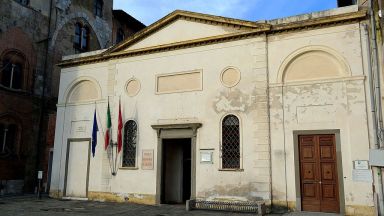
Location: Museo Nazionale di San Matteo, Piazza San Matteo In Soarta, Pisa, Province of Pisa, Italy | Hours: Tuesday to Saturday, from 9:00 to 19:00 (last admission 18:30). Sundays and holidays from 9:00 to 13:30 (last admission 13:00) | Price: Adults € 6.00 | Website | Distance: 1.30km
Visiting Museo Nazionale di San Matteo (National Museum of San Matteo)
Piazza Vittorio Emanuele, Pisa
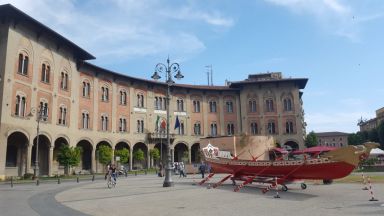
Location: Piazza Vittorio Emanuele, 56125 Pisa PI, Italy | Distance: 1.40km
Visiting Piazza Vittorio Emanuele, Pisa
Basilica Romanica di San Piero a Grado
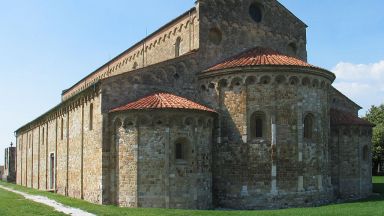
Location: San Piero a Grado, Via Vecchia di Marina, Pisa, Province of Pisa, Italy | Distance: 6.30km
Visiting Basilica Romanica di San Piero a Grado
Charterhouse of Pisa
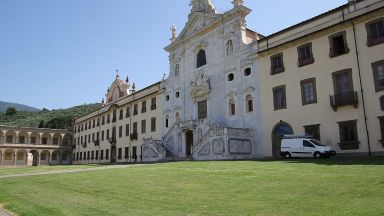
Location: Natural History Museum of the University of Pisa, Via Roma, La Pieve, Province of Pisa, Italy | Hours: From Tuesday 16 August to Sunday 4 September: Tuesdays, Wednesdays and Sundays: accompanied tours at 9 a.m., 10 a.m., 11.30 a.m. and 12.30 p.m. | Website | Distance: 10.10km
Visiting Charterhouse of Pisa
Villa Puccini in Torre del Lago
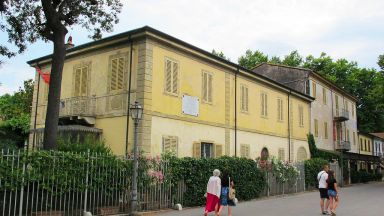
Location: Villa Puccini Museum, Viale Giacomo Puccini, Torre del Lago, Province of Lucca, Italy | Hours: November: OPEN ONLY on Saturday and Sunday from 10:00 a.m. to 12:40 p.m. (last admission 12:00) – from 2:00 p.m. to 5:20 p.m. (last admission 4:40 p.m.). December 1st to January 31st: from 10:00 a.m. to 12:40 p.m. (last admission 12:00) – from 2:00 p.m. to 5:20 p.m. (last admission 4:40 p.m.). February 1st to March 31st: from 10:00 a.m. to 12:40 p.m. (last admission 12:00) – from 2:30 p.m. to 5:50 p.m. (last admission 5:10 p.m.). April 1st to October 31st: from 10:00 a.m. to 12:40 p.m. (last admission 12:00) – from 3:00 p.m. to 6:20 p.m. (last admission 5:50 p.m.). On the days of the Puccini Festival (July and August): from 10:00 a.m. to 12:40 p.m. (last admission 12:00) – from 4:00 p.m. to 8:40 p.m. (last admission 8:00). Closed Monday morning (excluding period from June 1st to September 30th), December 25 (Christmas) | Price: € 7,00 | Website | Distance: 14.20km
Visiting Villa Puccini in Torre del Lago
Best Time to Visit Pisa
Average Temperatures in Pisa
- January 13°C 55°F 10
- February 14°C 57°F 12
- March 17°C 63°F 9
- April 20°C 68°F 9
- May 24°C 76°F 10
- June 30°C 85°F 6
- July 33°C 91°F 3
- August 31°C 89°F 5
- September 27°C 81°F 11
- October 24°C 74°F 16
- November 17°C 62°F 19
- December 13°C 56°F 12
How to get to Pisa
Getting to Pisa is possible by air, by road and railroad alike, which is why this Tuscan city is so easily accessible for any tourist who travels from various corners of Tuscany, Italy and from any corner of the world, for that matter.
Flying to Pisa
Getting to Pisa by plane Traveling by plane seems, by far, to be the most efficient manner to get to Pisa. The Galileo Galilei International Airport of Pisa is the main airport for Tuscany. The airport is located only 1 kilometre southwards from the centre of the Pisa and has has a shuttle to Pisa’s central Train station. The airport is also has excellent connections to the road and railroad infrastructure of Tuscany.
Other airports you could use are: Florence, followed by Genoa, Perugia, Bologna and Rome. Pisa airport is the most popular for flights within Europe, while Rome is the most likely arrival airport for US and Canadian visitors.
Getting to Pisa By train
Pisa is reachable by train from a series of Tuscan cities, such as Florence, Livorno, Siena and Lucca, but railroad also links Pisa to other major cities of Italy – Rome and Genoa, for instance. The main two train stations in Pisa where trains arrive from or depart to various destinations are the San Rossore Station (close located to the Piazza del Duomo) and the Pisa Central Station, from where several busses transport their passengers to the center of the city. Thus, Lucca is only about 30 minutes from Pisa by train, and the 24 trains covering the distance everyday assure a fine connection between these two Tuscan cities. Siena, on the other hand, lies about one hour from Pisa, hourly trains being available as means of covering this distance, whereas it takes about an hour and a half for the trains to get from Pisa to Florence (or the other way around), this connection being carefully supervised since tourist demand for means of transportation on this route is pretty high. Consequently, about 40 trains link Florence to Pisa. Pisa also makes a good destination for those starting off in Rome, though the distance is coverable in about 3 hours, the link being serviced by 20 daily trains. Obviously, getting to Pisa by train is an excellent alternative for people who, for various reasons, do not opt for flights or for other road opportunities.
Getting to Pisa by Bus
Tuscany is an excellent place to explore using buses as means of transportation, given that buses are the cheapest of all transport options in Italy, though some consider trains more efficient in terms of land transportation. There are plenty of buses which link the main Italian and Tuscan cities and towns to Pisa. Rome and Florence are excellently linked to Pisa by buses. There are three bus operators servicing the tourist platform of Pisa, each of them covering various destinations. Thus, Autolinee Lazzi links Lucca and Viareggio to Pisa, whereas CPT (Compagnia Pisana Trasporti) provides a reliable connection between Pisa and the entire province. A smaller operator refers to CLAP, which makes regular routes to Lucca and Pietrasanta. The main station for intercity buses in Pisa is the one located in Piazza Vittorio Emanuele II, close to the Central Station.
Getting to Pisa by Car
Traveling to Pisa by car is an experience all enthusiasts of Italy and of Tuscany in particular should make, given that the region has plenty to offer in terms of sceneries and tourist objectives. This possible option is also enhanced by the excellent road infrastructure of Italy, but the main drawback of traveling to Pisa by car is visitors who do not excel in orientation might be a little puzzled by the combination of motorways they must follow in order to get to Pisa. Thus, the main road leading directly to Pisa is the so-called SS1 Aurelia, which must be resorted to by tourists coming, for instance, from Florence, Rome or Bologna, and from Genoa alike. However, if departing from Florence, before entering SS1 Aurelia, tourists should follow either the A11 Florence-Mare Motorway or the Florence-Pisa-Livorno expressway. From Genoa, before entering the SS1 Aurelia, visitors should travel on the A12 Genoa-Rosignato Motorway, whereas if departing from Rome, the best choice is to combine the A1 Motorway to Florence, and then follow the Same A11 Motorway and SS1 Aurelia in view of finally arriving to Pisa.
